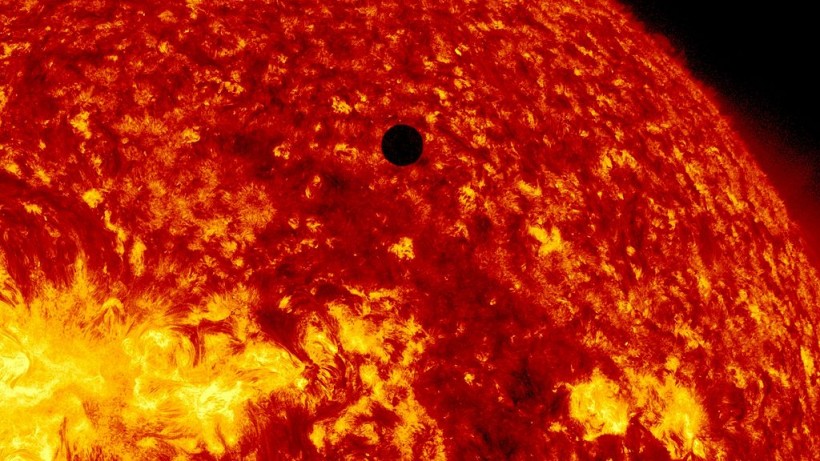An astrophotographer was reportedly successful in capturing one of the clearest views of our neighbor planet Venus. The image of the 'morning and evening star,' like any other planet, is challenging to get even with the most advanced telescopes and cameras. The photograph is one of the special shots of Venus. The image was captured while the planet passed through the luminous appearance of our gigantic sun.
Andrew McCarthy was the photographer responsible for getting ahold of the greatest image of Venus today. Alongside Venus, the expert captured various subjects from different planes in space. He is known to have complex and unorthodox methodology over his specialty. The latest project of the astrophotographer is not excluded, as several safety measures must be met to avoid the blinding light of our sun.
Andrew McCarthy Takes the Most Daring Astrophotography Challenge

IN SPACE - JUNE 5: In this handout image provided by NASA, the SDO satellite captures a ultra-high definition image of the Transit of Venus across the face of the sun at on June 5, 2012 from space. The last transit was in 2004 and the next pair of events will not happen again until the year 2117 and 2125.
One of the modern-day astrophotographers took the most daring task in his career. Capturing the image of Venus required outstanding expertise that is matched with an impeccable methodology. It is because the planet currently hovers in the face of the inescapable luminescence that the sun emits, which could undoubtedly harm the eyes that will look into it for a long period.
McCarthy, hailing from Arizona, is a well-known photography expert that captures the most detailed images from the depths of space. The latest project of the astrophotographer needed an additional effort compared to his previous works, as McCarthy needed to risk his eyesight for the sake of catching Venus, which sat just five degrees from the sun.
Due to its awkward location, the planet Venus is hard to imagine amidst the dark space. The only way to get the clearest view of our neighboring planet is during its visit near the sun, where the natural brightness will act as a spotlight for the shoot.
McCarthy took significant adjustments that would enable him to get the best image of Venus, including the equipment of advanced lenses, the right amount of exposure, and filter that will be used against the sun's light. The steps needed a little notch up to provide safety not just for the telescopes, but his eyes, too.
Taking Image of Venus Near the Sun 'Most Dangerous' Photography
McCarthy said in a DailyMail report that the project was the most dangerous challenge he had ever attempted. The expert added that the shot would truly damage eyesight if observed through the naked eye.
The astrophotographer explained that due to the close distance between Venus and the sun, he needed to use his own body's shadow to balance the light right from the sun. It prevented any spill of luminescence from entering the lenses as he took the images.
Any wrong calculations from his movements will let a tiny shine from the sun that could disrupt the imaging technique and ruin the device he used. McCarthy said that capturing Venus is never as dangerous as this recent project. Because of the appearance of Venus in front of the massive spotlight, the light of the sun shone as rings around the planet. It results in a silhouette on the dark side of Venus.
The attempt needed McCarthy's telescope to be unfiltered to get as many details from the planet as possible. Fortunately, the efforts produced great results, making his gazing hours well spent. McCarthy's recent gallery was published on his social media platforms under @Cosmic_background, and at his astrophotography website Cosmic Background.
RELATED ARTICLE: Russian Cosmonauts Completes First Spacewalk Of 2022 Ahead Of Future Spaceflights
Check out more news and information on Space in Science Times.














